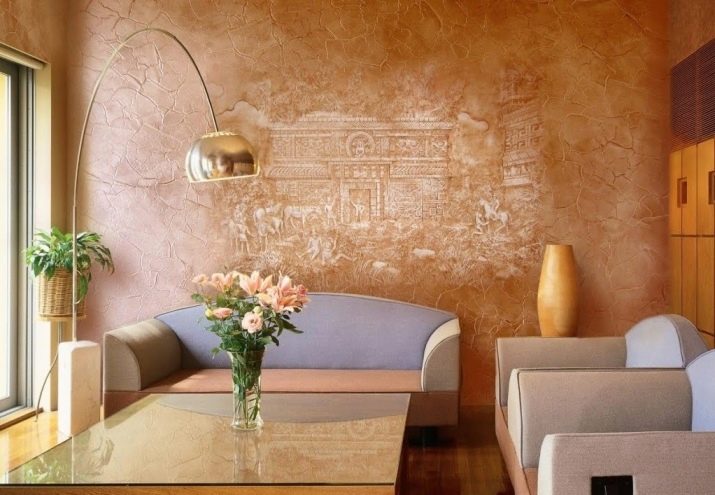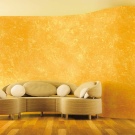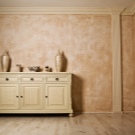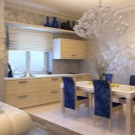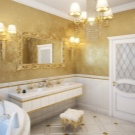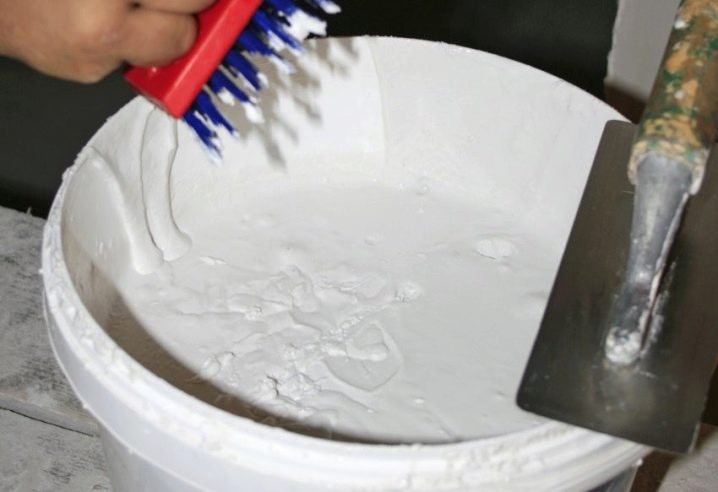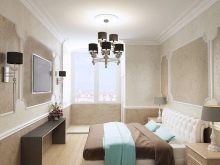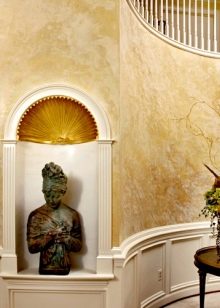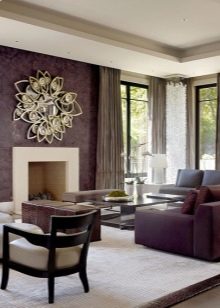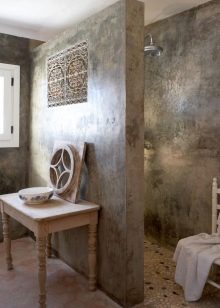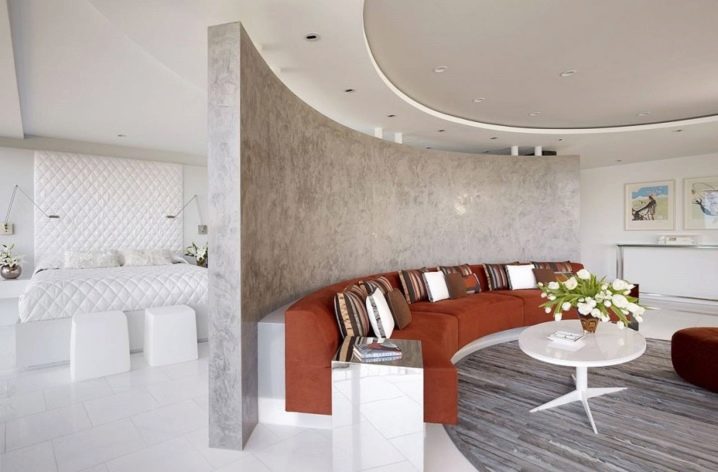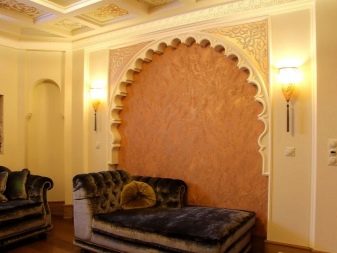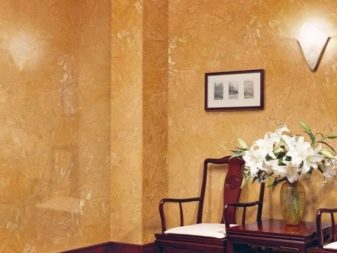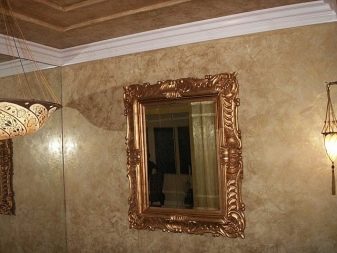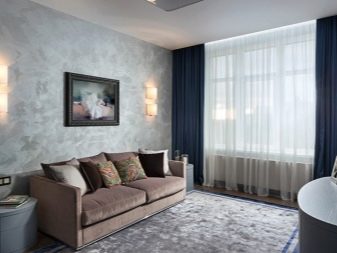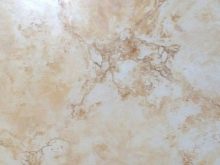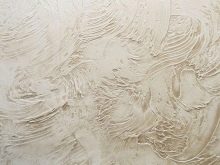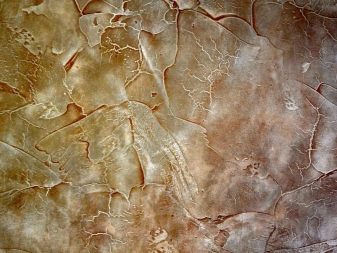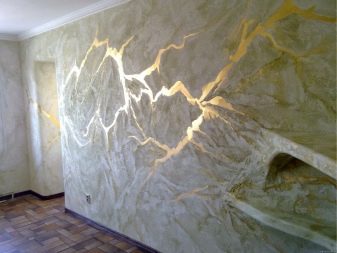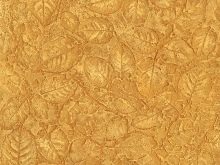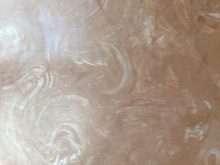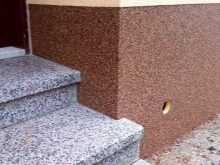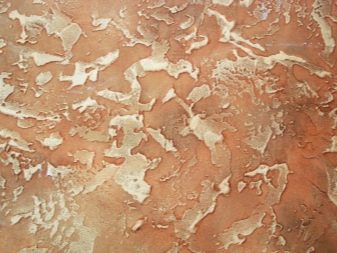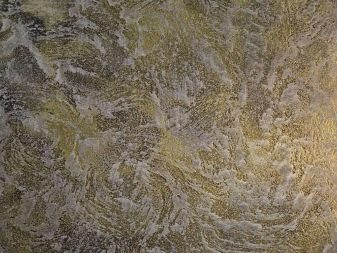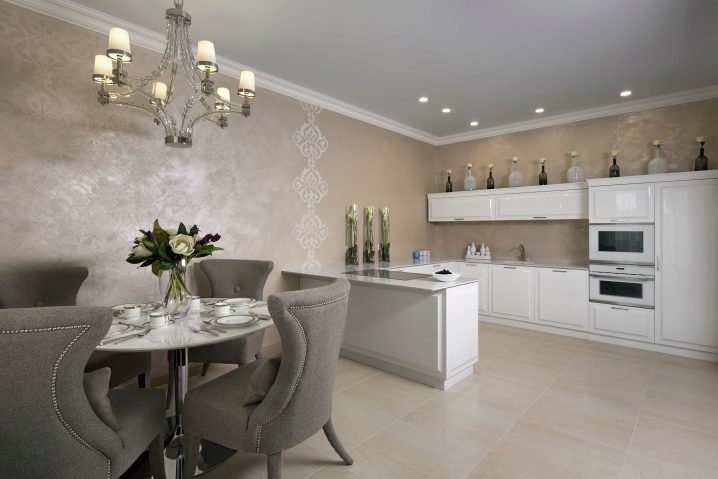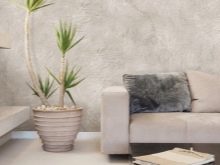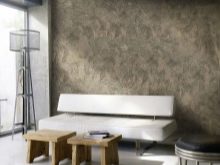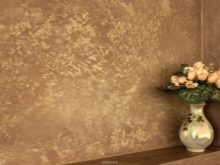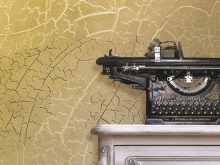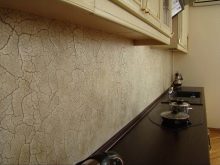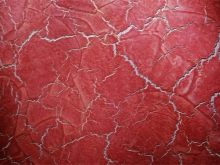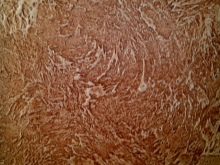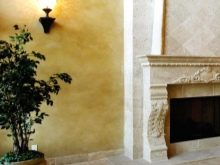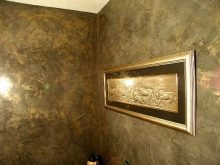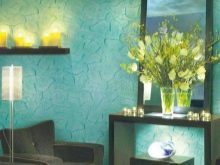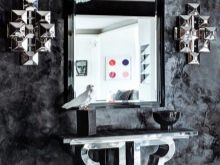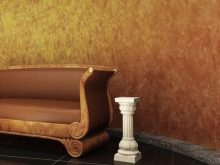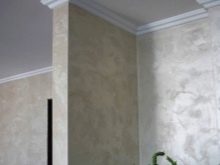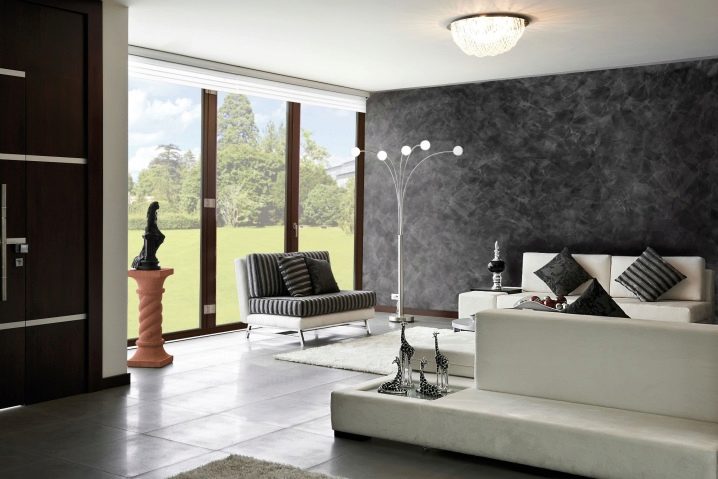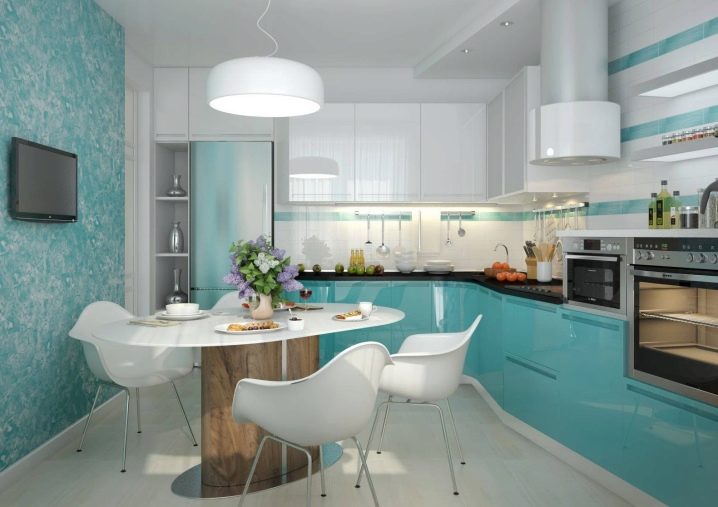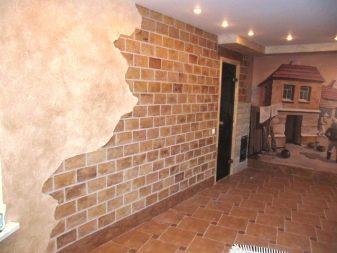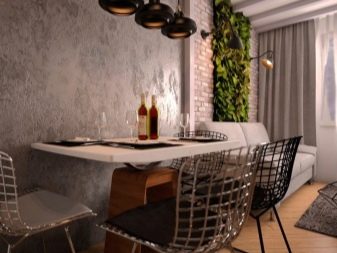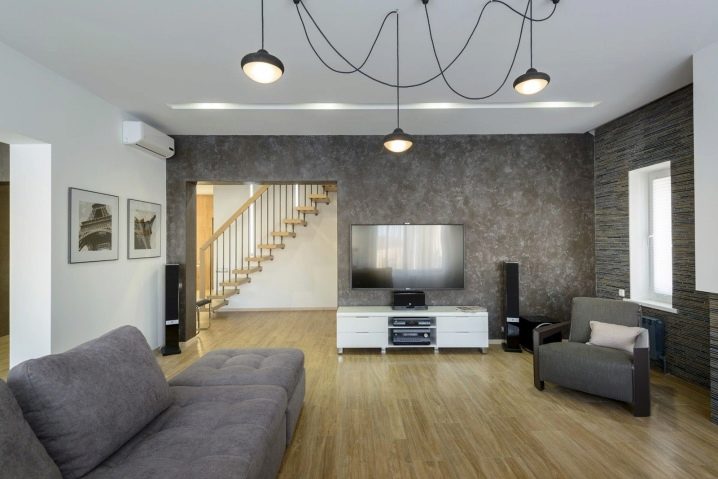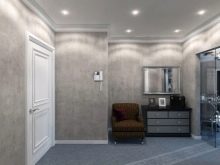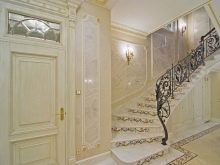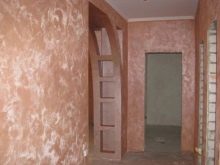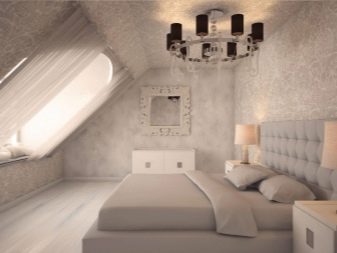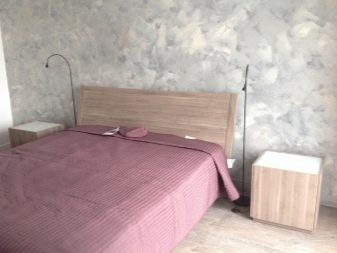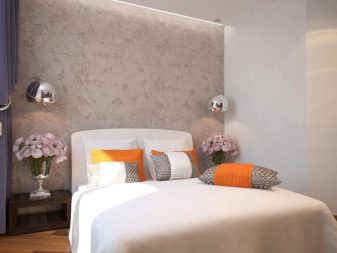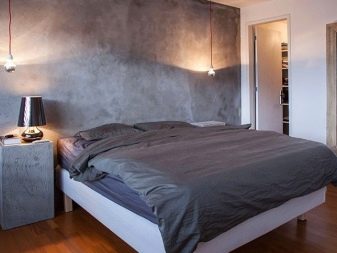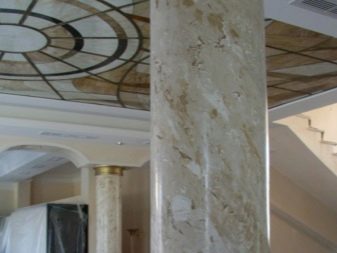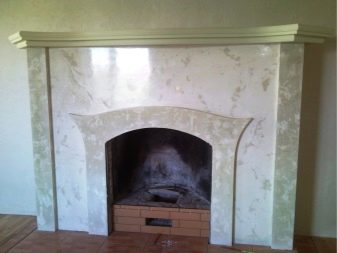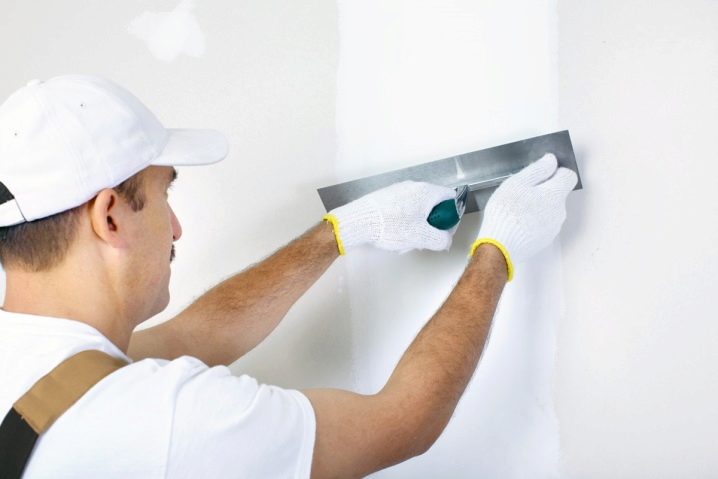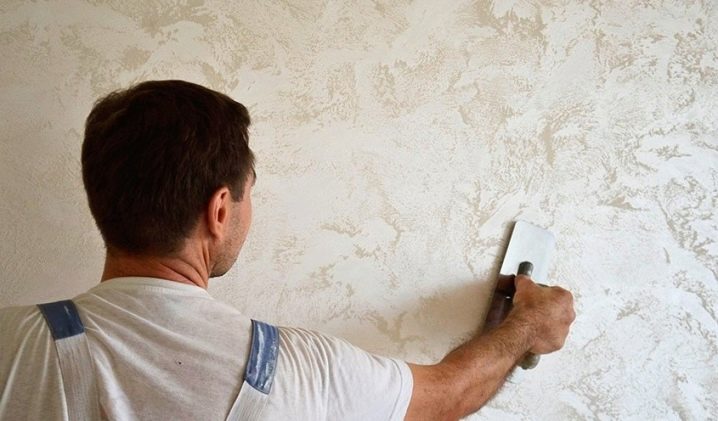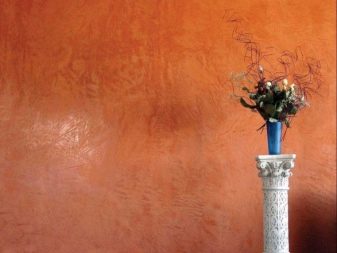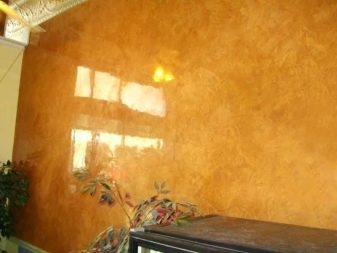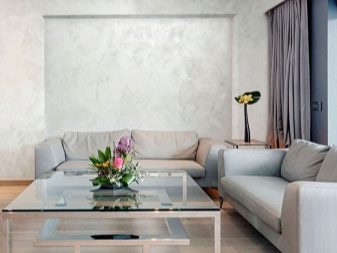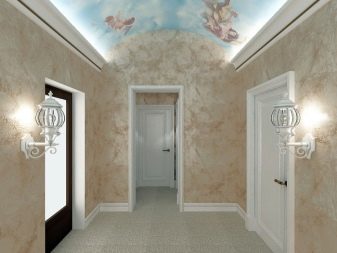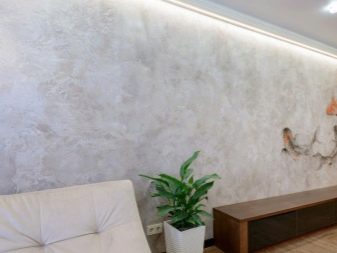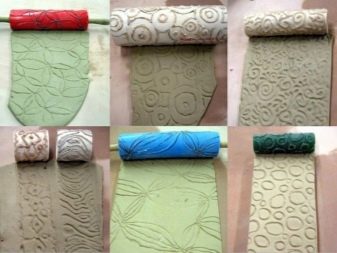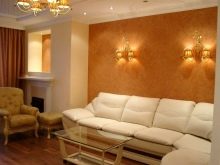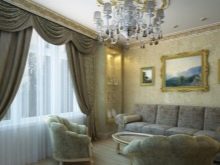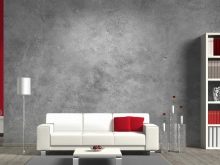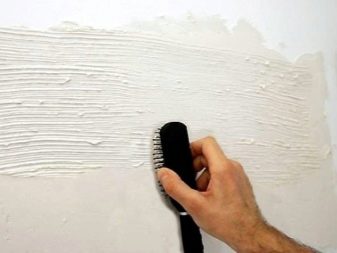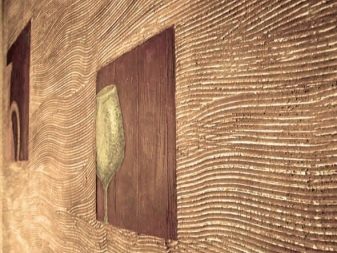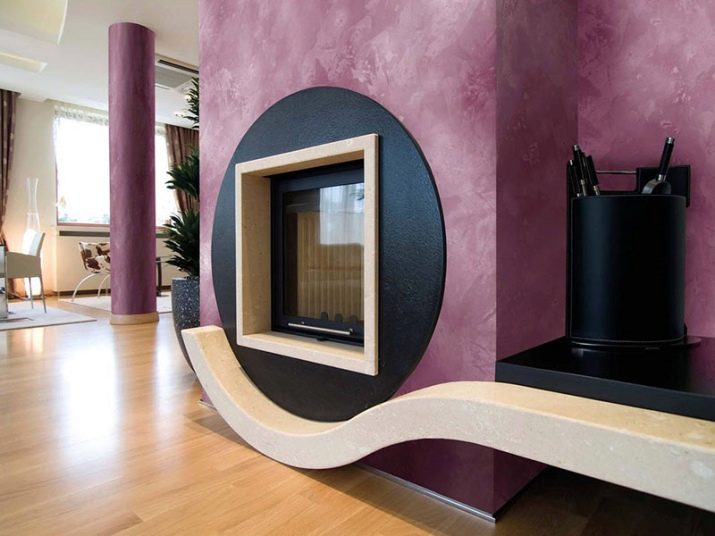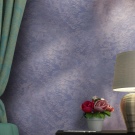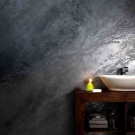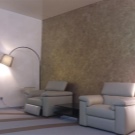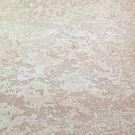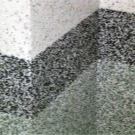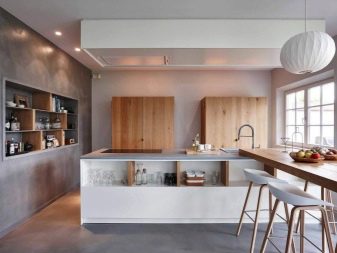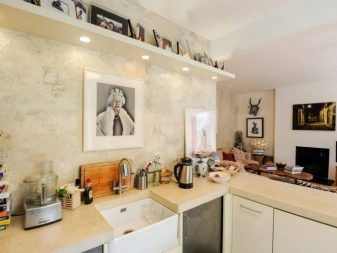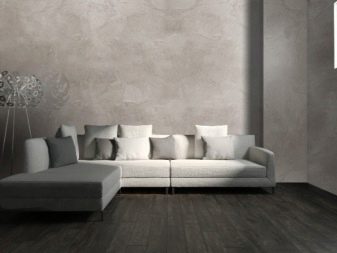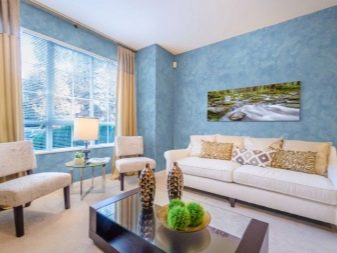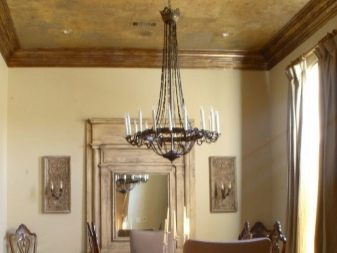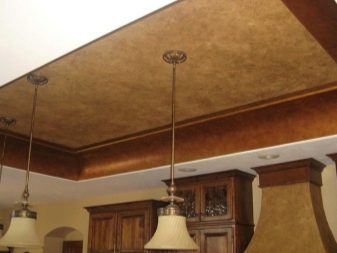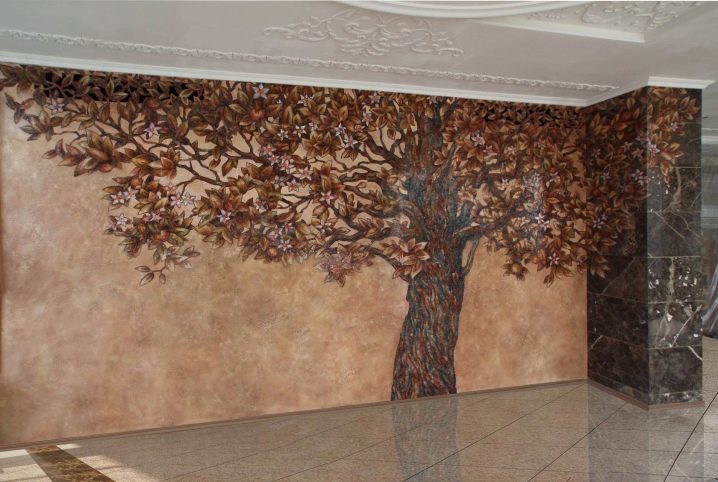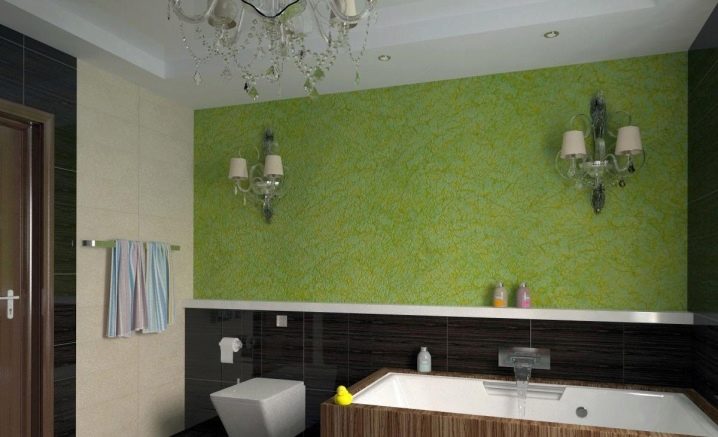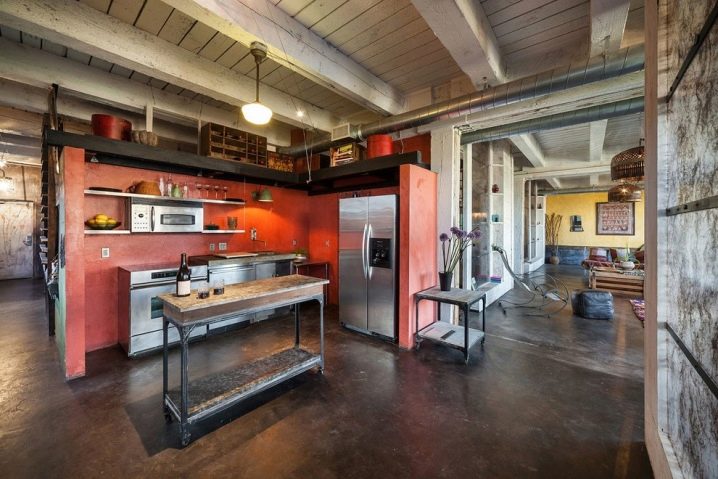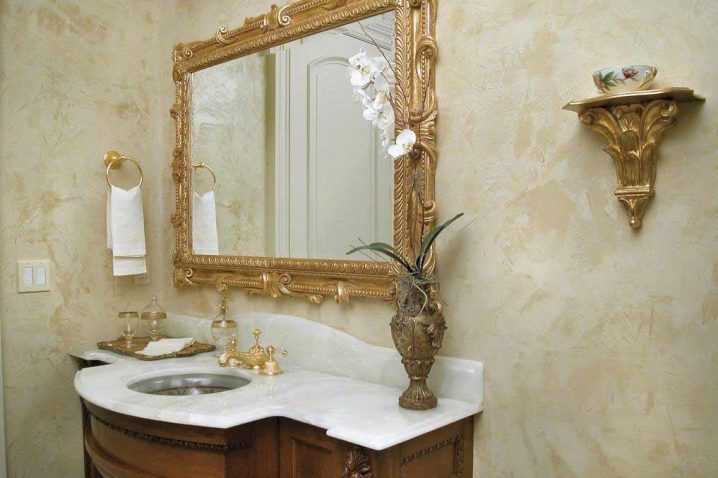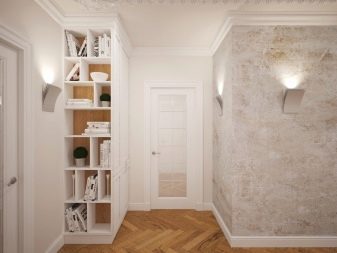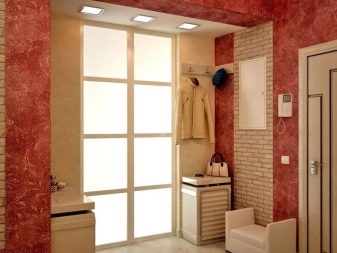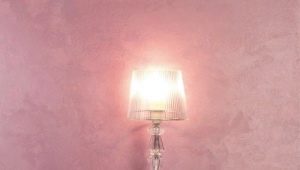Venetian plaster: features of the application in interior design

Create a refined interior design allows the walls of Venetian plaster. If you follow the installation rules, you can get an elegant, respectable coating that mimics a particular surface.
What it is?
Venetian plaster is a decorative mixture for finishing the interior surfaces. It consists of marble, quartz, granite or other stone chips of a natural component, as well as an acrylic or latex binder component. In addition, there is a filler, which is used as lime, gypsum or marble (sometimes granite) flour.
The result is a translucent paste of thick consistency.It is tinted to obtain the desired shade.
To get a more spectacular surface, imitating marble, used 2-3 shades of plaster, applied to each other. A greater number of layers allows you to achieve the depth of color, expressiveness of texture.
When light hits it, the surface plays and flashes like a real stone.
The history of the material begins in the era of antiquity - in Venice. The flowering of material and technology falls on the year 1700. Branded secrets of the composition of the material and features of its application were kept in terrible secrecy and passed on from generation to generation by craftsmen. The composition of the plaster at that time consisted of lime putty, primer on a natural basis, waxes, oils, marble powder. Not surprisingly, pasta was expensive and was available only to wealthy Venetians.
Today Venetian plaster comes in the form of a finished composition or dry mix. Of course, there are specialists who prefer to make the product with their own hands. However, this is a very laborious, technologically difficult process, requiring high professionalism.
The material is popular because, in addition to the stunning visual effect, it has the following advantages:
- High strength and resistance to mechanical damage, due to the formation of a carbon film on the surface of the plaster after it dries. Due to its strength, the material is not abraded during operation, is not covered with cracks under mechanical action.
- Wide temperature range of use: in the range from -50 to + 80 ° C, resistance to temperature extremes.
- Versatility - suitable for interior decoration of residential, office, commercial premises. When applying an additional layer of enamel coating can be operated even in rooms of high humidity.
- Water resistant. Thanks to it wet cleaning of surfaces is possible.
- Environmental friendliness of the material, since it contains no toxic components and substances that cause allergies.
- Long service life (15-20 years) and the preservation of the decorative appearance during the entire period of operation.
- Ease of care. Material easily transfers both dry, and damp cleaning.
- High fire resistance.
Due to the variety of material, shades and application techniques, you can create an exclusive interior. With the help of such a finish, it is possible to imitate rare and expensive rocks. At the same time putting plaster in comparison with the use of natural stone is easier and cheaper.
Not less popular are compositions that provide an imitation of wood, velvet and silk surfaces.
Despite resistance to low temperatures and moisture, the coating is not intended for external application. Under the influence of environmental factors, plaster cracks, losing its operational and decorative properties.
The material minus consists in high requirements to the quality of the working base - it should be smooth, even and clean. Although the material is applied in several layers, The coating is very thin. Any imperfections - irregularities, cracks, potholes - will be noticeable.
Calling the flaws of the material, some users talk about the high cost of the product. And apply it in 3-10 layersthat also contributes to higher costs.The application of the composition is not a difficult process, but it is much more difficult to get this or that effect. To create some types of patterns and drawings require the skills and knowledge of a professional.
Kinds
There are 3 main types of Venetian plaster:
- Smooth. To obtain such a surface, lime plaster is used, which can only be of a light color. Working with such material without having professional skills will not work.
- Relief. The mixture contains marble granules, due to which grooves and potholes are obtained, forming a relief.
- Fiction. It involves the process of creating a full-fledged drawing, but not with paints, but with plaster.
Depending on the composition and characteristics of the application, the following types of Venetian plaster are distinguished:
- Classic. Components of this type are marble chips, a binding component, as well as additives that ensure the strength of the composition. Such a variety involves traditional multi-layer coating.
- Marbled plaster. The composition is similar to the previous product. The originality of the texture is ensured by applying in a certain technique, the finished surface simulates the structure of a natural stone.
- Textured. Through the use of a special technique of applying the material, it is possible to obtain an imitation of natural stone, wood, leather or fabric.
- Pearl. The composition of this type of plaster is characterized by the presence of reflective particles, due to which interesting optical effects are created.
- Stucco with marble crumb different faction. Usually used to highlight certain areas of the interior, allows you to place accents, draw attention to detail.
If we talk about the characteristics of the composition, then there are the following options for Venetian plaster:
- Polymer. It protects surfaces from cracking, as it dries out and forms a thin flexible film. It is characterized by improved adhesion with the base. Such plaster fits well on drywall, primed metal, MDF, concrete. The surface is characterized by resistance to temperature extremes. As a basis for it is usually recommended gypsum plaster.
- Limescale. It is somewhat inferior in terms of its moisture resistance to the polymer analog, however, it has better vapor permeability.Lime-based plaster is resistant to mold and mildew, as well as frost.
If the composition is made on the basis of lime and cement, it is called mineral, and when quartz crumb is present in the composition, then it is silicate plaster. The latter is more expensive, but more durable than mineral, is not covered with cracks and has the ability to repel pollution.
Acrylic or silicone acts as a binder. Acrylic formulations are more affordable, suitable for self-application.. Silicone counterparts are more resistant to pollution, temperature changes, exposure to direct sunlight, but they are more expensive and require professional application.
Today, Venetian plaster is a dry mixture based on filler, binding elements and additional components, primarily pigment. Depending on the recipe and the ratio of these components, the properties of the plaster and the type of finished work will change.
Colors and design
Using the same composition, you can get dozens of different textures. Among them, the classic surface, that is absolutely smooth, perfectly smooth.A much larger number of techniques includes embossed plaster.
The most popular relief application techniques are:
- Carrara. The technique is the application of numerous (up to 12) layers of plaster, with each layer different from the previous one by half a tone. The result is an imitation of expensive Carrara marble, playing in the sun in various shades. Due to the large number of layers, as well as the need to apply expensive plaster with real Carrara chips, this method is one of the most expensive.
- Craquelure. The surface treated in such a technique is artificially aged, covered with a network of cracks. To obtain a similar effect, a special craquelure varnish is used. It is applied on top of the final layer of plaster and, drying, it attracts the plaster layer, tearing it apart. So the freakish pattern of cracks turns out.
It should be noted that the creation of such an invoice also requires tangible financial investments. The most expensive will be the purchase of varnish.
By the way, experts have found a way to make this method cheaper.Instead of applying craquelure varnish, the plastered layer is forcibly dried, for example, with an infrared emitter. As a result of this, cracks form on the surface, then it is tinted to a darker color and, finally, is covered with colorless varnish. The treated part of the wall is covered with wax.
It should be noted that the aged surface looks noble, and the presence of cracks does not affect the performance of the material.
- Marseilles wax. Allows you to emphasize the depth of the texture, and also increases the moisture resistance of the coating. “Marseilles wax” is added to the usual composition of Venetian plaster, after which it is applied in the desired technique.
- Veined surface. The classic marble surface with veins is achieved through the use of stucco with bituminous marble chips, tinted with soot. Smears are applied with a very thin instrument (as an option - with a medical spatula), and then carefully rubbed.
- Veneto. Pretty simple technique of classic Venetian plaster. Can be smooth or embossed.
- Trevignano. A polymer blend and a special application technique are used, as a result of which the effect of a marble wall is recreated, as if illuminated from the inside by the sun. It is believed that the resulting imitation is close to the surface of the rock called travertine. Travignano looks best in the living rooms of the baroque spirit and vintage interiors.
- Marbello. Exquisite texture resembling velvet with glossy veins. Depending on the lighting, the hue and depth of the material change. Looks expensive, elegant and harmonious in classic interiors.
- Encausto. Working in such a technique, it is possible to recreate a dark matte surface resembling granite. Enhance the effect allows the finish wax coating.
- Palmier. Simulates fantastic surfaces of marble, granite, malachite, onyx, riddled with a network of luminous veins. Due to this coating it is possible to obtain airiness, volume.
- Imperiale. The peculiarity of the composition is the presence of gold pigment in it, which sparkles and shimmers when light hits it. Stylish and respectable looks black with a golden sheen plaster.A great option for interiors in the style of art deco and vintage.
- Wet silk. Recreates the effect of stretched expensive cloth, silk on surfaces. It is preferable to choose a composition with large fibers, because it looks more expensive and nobler.
If to apply wax on a surface as a finishing layer, then the glossy surface turns out. Opposite in its aesthetic properties of a matte surface, not having a wax coating. As for color, the shades that allow to imitate the surface of a natural stone are considered to be the most popular. First of all, it is beige and white plaster, shades of blue, green, aquamarine, gray, brown.
To create color accents suitable purple, rich green mixture, plaster fuchsia.
Application area
The material is used exclusively for interior decoration and is not recommended for application without a protective coating in places with high humidity. Due to its reliability and durability, plaster is used not only for decorating walls in an apartment or house, but also for finishing office and commercial premises, as well as concert halls.Thus, if you need to make repairs in the house, the purpose of the plaster is unlimited - it is suitable for walls, ceilings, individual interior elements.
The important point - the texture and shade of plaster should match the overall style of the interior.
Moisture resistance and vapor permeability of Venetian plaster, as well as the ability to wash the coating (including soap solution) cause active use of the material in the kitchen. For large rooms, it is recommended to select relief and textured types of coatings, for small kitchens - fine-grained plaster, colors - at the discretion of the user.
Experts do not advise to use too bright colors in small kitchens., as they visually narrow the room and look aggressive. The combination of Venetian plaster with brickwork, stone or wooden surface looks organic.
Experienced users do not recommend putting material in the sink and stove zone - here it is better to keep the traditional tile.
For the living room in a classic style suitable fine-grained version of the material of light pastel shades.For high-tech style, as well as minimalist interiors, you can choose a coarse, rough plaster of gray, graphite or steel shades. Bright Venetian plaster will be an excellent background for spacious living rooms with lots of light. Overly elaborate designs should be avoided. At first they, of course, will attract attention, but then only cause fatigue and irritation.
If you want to perform Venetian plaster wall finish in the bathroom, it is recommended to give preference to smooth surfaces. Relief textures can cause mold, because in the grooves easily accumulates dirt and water is collected. A similar material should be chosen for the walls in pools, saunas and baths. Be sure to apply a finishing layer of moisture.
For the hallway you can use the same plaster as for the hall. This will allow to stylistically combine the room, make it more spacious. For finishing, you can choose both smooth and embossed surfaces. The combination of Venetian plaster with other surfaces will be successful.
In the bedroom it is better to use both light pastel shades and deep blue, emerald or aquamarine color.
If the room does not have a large area, then such active colors can be used in a certain area, for example, in the area of the head of the bed. The rest of it can be lighter, grayer or pastel.
For bright rooms, you can choose cool shades. If the lighting is predominantly artificial or a bit of it, then it is better to decorate the surfaces with a plaster of warm colors.
Marble crumb looks good not only on large areas and walls, but also when finishing decorative architectural elements. First of all, we are talking about the decoration of columns, protrusions and portals of fireplaces. As for the surfaces, the best material is applied on a flat brickwork, concrete and drywall.
The surfaces, covered with oil paint, have good adhesion, so the material lies on them exactly, keeps firmly.
When using other paints, the surface needs to be cleaned of them, and after that - putty and made a little rough using emery paper.
Tips and tricks
"Venetian" can be applied only on a smooth flat surface. If it is impossible to achieve such, it is possible to fix the drywall on the batten and then apply the composition to it. This method will allow you to get ideal working grounds, save time and effort on leveling, but will slightly “eat” the usable floor space. Regardless of the type of surface, the first layer under the Venetian composition is applied a special plaster. In order to save, you can replace it with acrylic paint.. It may be white or have a tone close to the base color of Venetian plaster.
Before starting work it is necessary to divide the walls into small areas - it will be more convenient to apply the composition. Plastering such a site, you need to go beyond its boundaries, so that in the future, transitions between adjacent areas are smooth and unnoticeable.
The first layer of primer is applied with a standard spatula, and after curing it is cleaned. For subsequent layers, you must use a flexible spatula, with which you can create an arcuate pattern.
It is important to let each layer dry completely before applying the next one.. In this case, the tone of each application should be different from the previous one - it can be in the same range or contrast. At least 4 coats will be required.. However, there are techniques that require application and 12 layers.
The attractiveness of the coating is largely determined by the skill of the specialist. The result of the work depends on how harmonious the color combinations of long and short strokes are.
After stripping the last layer, wax is applied, which not only provides additional waterproof protection, but also gives the Venetian plaster a dull or glossy finish. It is better to refuse the use of varnishes (if this is not the craqural). The final stage of the work is to polish the surface with a soft, preferably suede cloth.
If the desired surface does not work, it is unacceptable to allow the layer to dry. It is necessary to immediately put on the surface a little plaster and level it. After waiting for the complete drying of this area, it is treated with sandpaper.
Wanting to arrange the surface under the marble, it is useful to know what its cost consists of:
- Type of material and method of application. From this point of view, relief plaster will cost the least.
- Number of layers. At a minimum there should be 3 of them. Of course, the master will have to pay more for more labor-intensive work, and the material consumption increases.
- Getting the desired shade. Bring the desired shade - this is a whole science, considering also the fact that after drying the plaster has the ability to brighten. In this regard, the work should be trusted professional, whose services can not be too cheap.
In addition to Venetian plaster, you also need to purchase material. for finishing. The best option - beeswax, after treatment with which plastered surfaces acquire an exquisite glossy shine. There are cheaper analogues wax. For rooms characterized by high humidity, enamel will also be required.
We should not forget about the working tools - they will need several types. First of all, it is a usual and thin spatula, and also its flexible variation, trowels, semi-graters, rollers. For rubbing and polishing wax should take care of the presence of a soft suede rag.
To obtain smooth surfaces, it is imperative to have a trowel, and for embossed and artistic options - rollers, brushes, various spatulas, and even handy objects: rags, brooms, crumpled paper, covering film.Having a certain skill, with the help of the latter, it is possible to create original textures.
Beginners should choose a composition with large fractions. Creating a grooved surface is easier than smooth. For the application of art paintings, as a rule, requires the talent of the artist.
To apply a substance to the kitchen surface, it is better to acquire a composition with anti-fungal properties, and for a corridor and a living room - a composition having enhanced strength characteristics. When you buy several buckets of such material, you should pay attention to the lot number - it should be the same on all containers, because otherwise there is no discrepancy between shades. Kohler should be purchased from the same manufacturer as plaster.. Mandatory to purchase as sandpaper of varying degrees of grain. The first layers are treated with coarse-grained sheets, and the finishes are treated with fine-grained varieties.
To achieve this or that stylistic effect is possible, not necessarily using expensive specialized formulations. The easiest way to get the texture is the splashing method.. Splashes can be created with a trowel, spatula, and even a broom.
Chaotic grooves are performed over a fresh layer of plaster with a metal brush or broom. After application, it is recommended to smooth the grooves a little by sweeping the surface with a damp sponge. An interesting effect, called graffito, can be achieved by applying 3 layers of the described plaster of different shades. Without waiting for the complete drying of the last layer, with or without a stencil, the upper layer particles are removed. The result is an interesting mosaic.
Working in one or another technique, one should avoid geometrical accuracy, symmetry, mathematical adjustment of the pattern.
You will never find such a thing in nature, and therefore imitation of a stone surface will be inaccurate.
Manufacturers
All plaster brands on the domestic market can be attributed to one of the following price segments:
- Upper. This includes quite expensive formulations, the average price of which is for 1 sq. M. m is from 1000 rubles. The segment is represented by such European brands as Oikos, Sammarinese, Valpaint, Baldini. By the way, the last manufacturer is often “prepared” in Belarus, which indicates a fake of the material. Companies from Russia are not represented in this group.
- Average. For 1 square.m will have to pay 400 rubles. Among the reputable manufacturers from Europe are Ferrara Design, Veneziano and San Marco; among domestic companies, Natura Interior, Adicolor, Decorazza.
- Lower. The average cost is up to 400 rubles per 1 square. m. It is represented by materials from domestic companies Descartes, Ceserit, Bayramiks, VGT. It should be noted that for the price indicated it is impossible to buy the original European mixture, so if you offer Italian Venetian plaster, the cost of which is for 1 sq. M. m less than 400 rubles, it is a fake.
The products of these brands are durable and durable, meet the standards of quality and safety.
As for the variety of types of plaster, Ferrara Design, which has about 100 types of Venetian plaster in its range, can boast. It is inferior to the producers of San Marco, Oikos (Europe) and Decorazza, Decor (Russia), the range of which includes more than 30 types of plaster. The collections of Sammarinese, Valpaint, Baldini (European), Ceserit, Bayramiks and Descartes have less than 30 types of plaster.
Each company has a certificate of state registration, indicating that the product is environmentally friendly.However, the European safety sign class A + (evidence of the absence of harmful volatile elements) was awarded only to Baldini, Sammarinese and Ferrara Design. Positive customer feedback has products brand "VGT". Having a natural marble crumb in structure, the product differs in high quality and reasonable price. At the same time, users prefer coarse-grained samples, which is due to the color saturation and originality of the texture of the finished coating.
Beautiful examples of use in the interior
One of the latest trends in interior design is the application of Venetian plaster on the ceiling. Of course, this is a laborious and laborious process that requires a lot of preparatory work: the organization of a plasterboard ceiling. But the result is worth it.
Venetian plaster on the ceiling is especially attractive in large living rooms and cabinets in a classic style. It is better to use a glossy composition of light shades, which also allows you to visually lift the ceiling.
The important point is that the coating requires a good, well-thought-out lighting - only in this way is the whole beauty of the stone revealed.
Venetian stucco in a bright range looks good in classic interiors and is perfectly combined with furniture and elements of wood. A win-win, even for small rooms, is a combination of ivory-colored plaster with simple shapes of furniture.
As a decor you should not be afraid to use pictures in massive wooden frames. And if you need to visually enlarge the room, then you need to enclose mirrors in them.
Venetian plaster will help make the room dynamic, bright, fill it with the energy of nature. To do this, it is enough to choose the relief composition of the fine fraction of a saturated green or orange color. The main thing is that the colors were bright, but not acidic, but natural.
It is most appropriate to use this idea in the kitchen or in the dining room. Enough small "island" to revive the room. Do not forget to maintain the bright color of the wall with accessories to match. For studio apartments and loft-style homes, rough Venetian plaster of a rich color becomes a zoning method. However, it is not necessary to choose the active color, because you can delimit the space using polar textures.A smoother mixture to apply on the walls in the recreation area and living room, textured - in the kitchen.
Stucco blends well with stonework, so in demand when you make a loft-interiors.
Plaster, having a golden play, will help to turn a familiar bathroom into a luxurious boudoir. Choose a light shade, for example, marbled. As a "companion" golden reflections should choose the same shade accessories or plumbing "under the gold".
Experts recommend the use of coarse-grained textures in the corridor and on the balcony. It is better to combine it with wicker furniture, tiles on the floor, repeating the pattern of plaster. As for color, it is optimal to stop the choice on a neutral beige palette. Color accents help to arrange accessories and textiles.
On how to apply Venetian plaster, you will learn in the next video.
